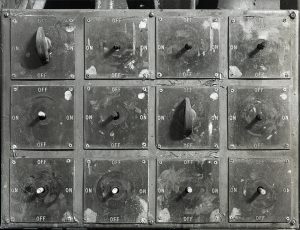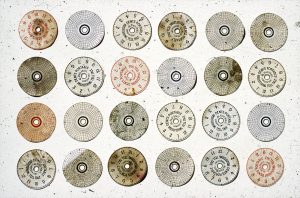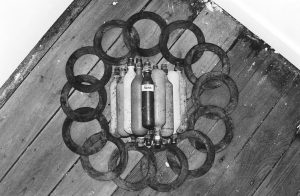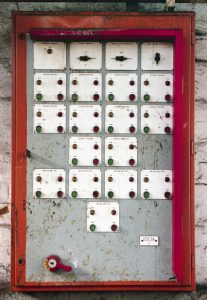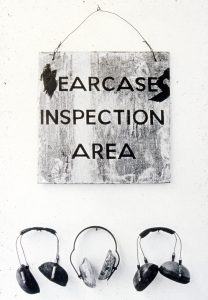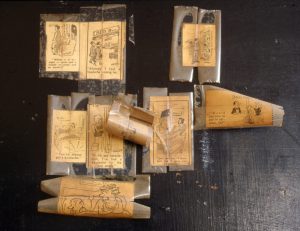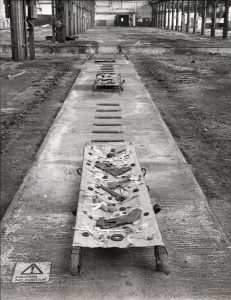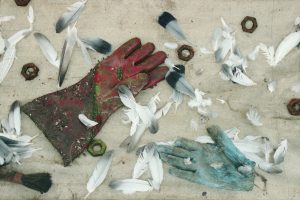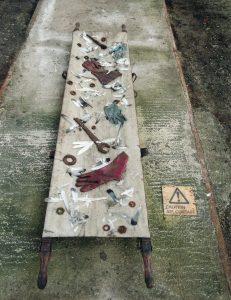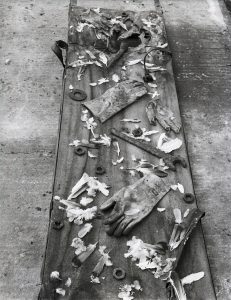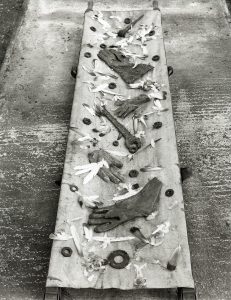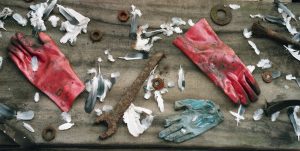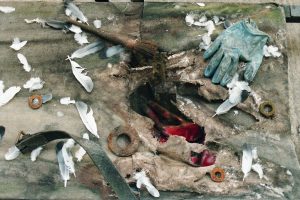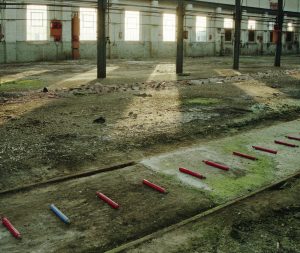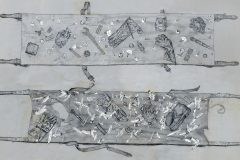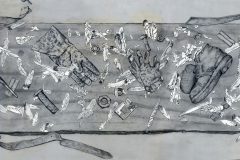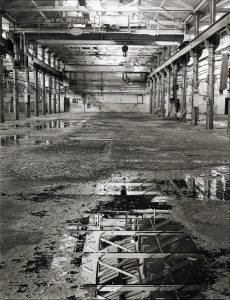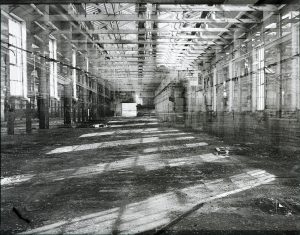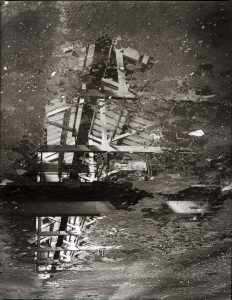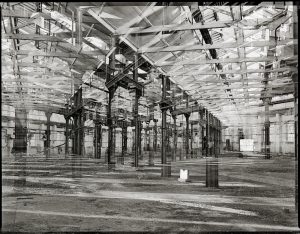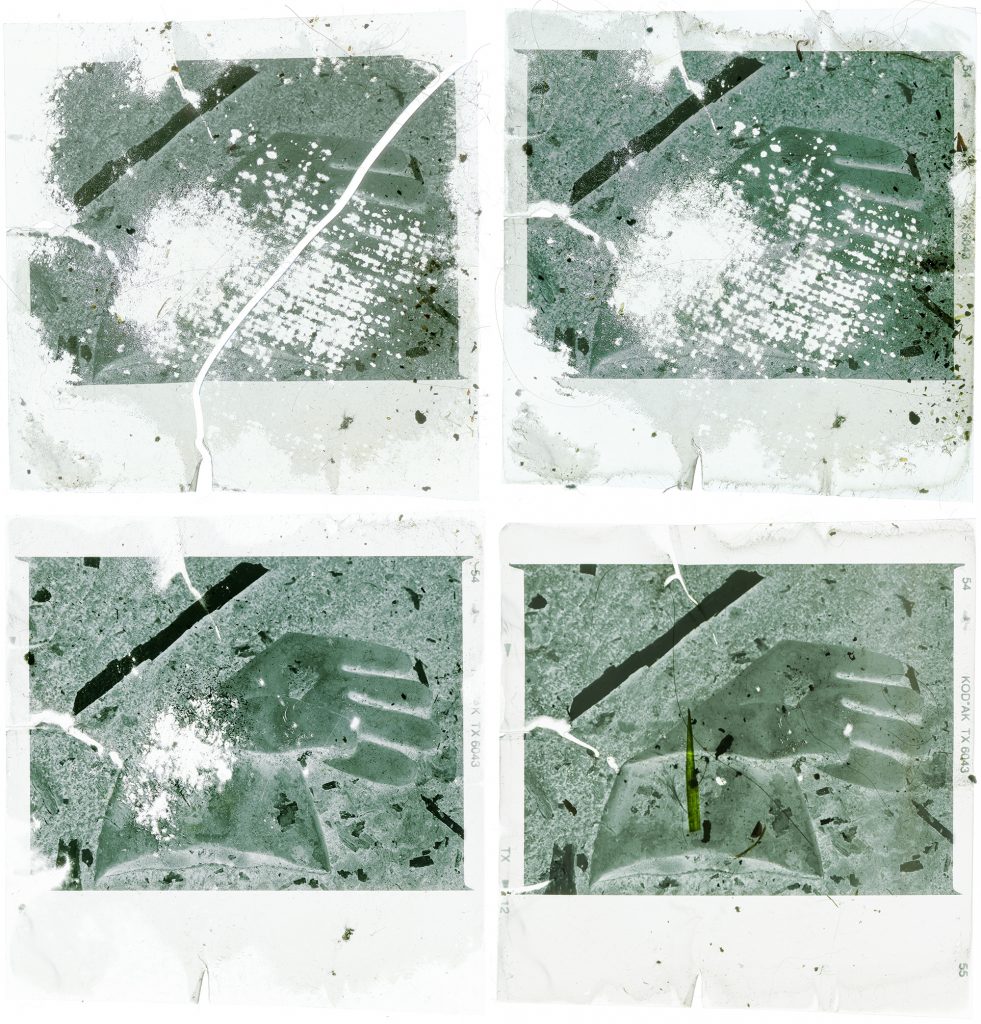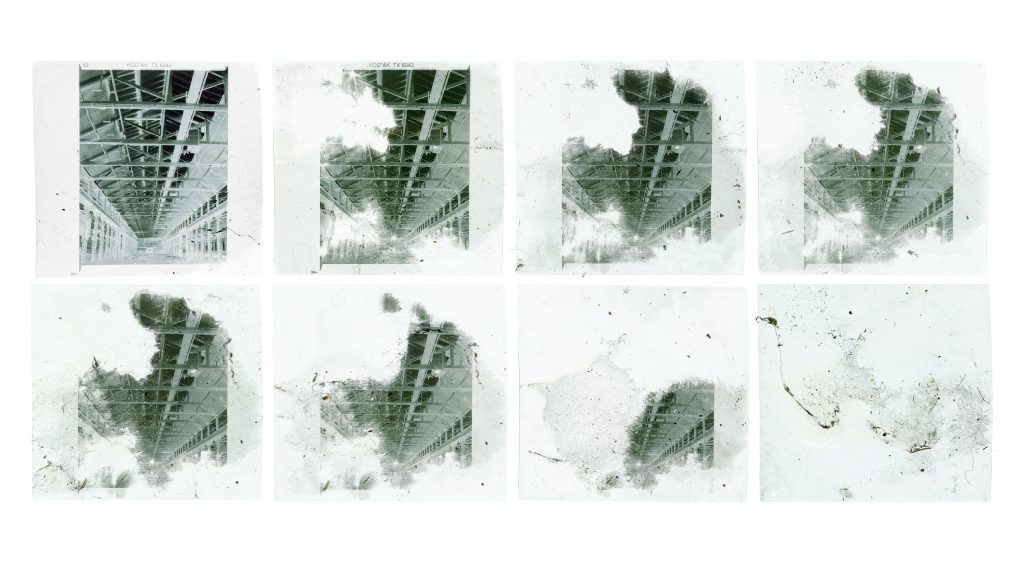The following works and text are adapted from the paper Inside the tender shed; a critical evaluation of an art project 17 years on presented at the Urban Space and the Body conference, School of Italian, University College Cork June 2017.

In 1999, I embarked upon a project to document, interpret and subsequently make an exhibition about a building whose imminent demise was certain. The tender shed was not a gentle and intimate place as its name suggests, but rather a large industrial factory built in 1873, part of a huge complex of railway engineering works in Crewe in the UK. Its name comes from its original function. This structure was the site where the tenders for steam locomotives were built, so rather than softness and intimacy, the shed was more about coal and water, the fuels for driving steam engines, and cast-iron wheels, plates and rivets.
I have reconsidered this project in the light of the intervening 18 years since its creation, in terms of recent research in industrial ruination, the roles of memory and photography and the interplay of methodologies in art and archaeology that were active in the project. As a result, the project has been reworked to consider the relationship of the body to the space and the wider cultural and social surroundings that it took place in. I have also produced new works as a result of returning to the project.
At the beginning of the fieldwork, In my capacity as an archaeologist, I contacted the Cheshire Archaeologist to ask as to whether I should make a formal architectural record for the county archives. His response was that as the building was not one of the earliest on the site, having been constructed roughly 20 years later, it was not officially of interest. This meant that there was no reason for a formal survey and that any archaeological component in the project would be limited to its influence on my artistic interpretation of the site. The resulting works would also not form part of the local official archives. It is, of course, part of my own archive of work and as such, I have re-investigated it here.
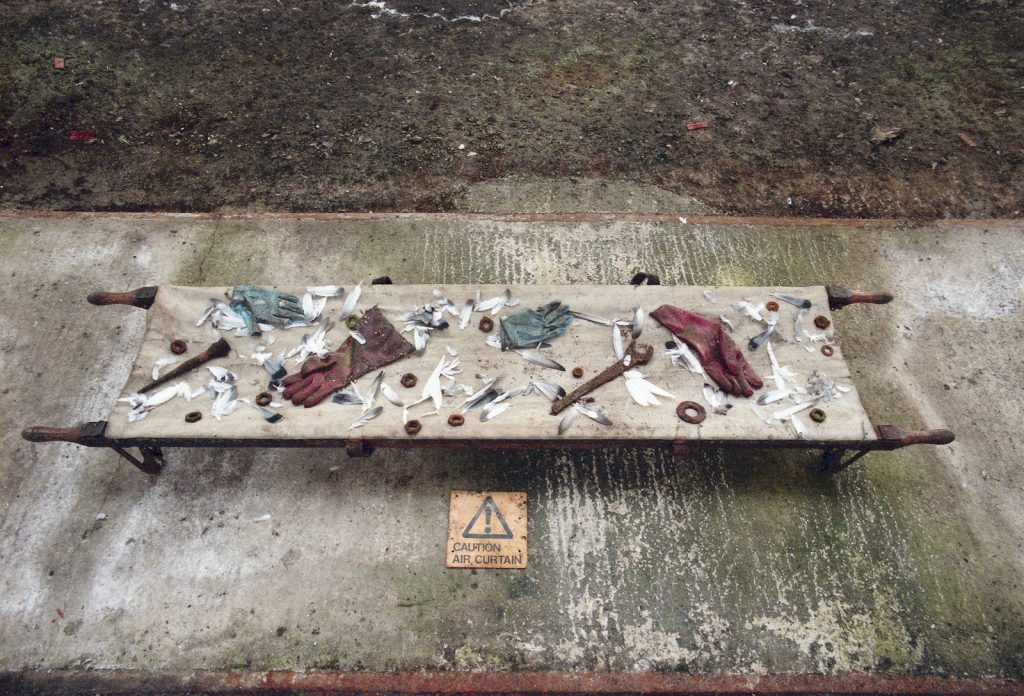
The archive has many photographic prints (tests, folio and exhibition); negatives and slides, flyers and invitations to the opening. I also have a review from a local newspaper, useful in providing some local contextual facts that I would have otherwise forgotten. Most of the actual material, like the stretcher above, has been lost in the process of moving house and studio over the intervening years.
Remembering
Although my memories are linked to looking at the artworks, over time, the photographs are becoming independent of my memory of the experience. Although I recognise the scene, the narrative of the experience is missing. Photographs stimulate memory recall each time they are looked at, each memory becoming further distant from the initial contact with the scene or object depicted, overwritten with reencounters, the artworks take on new meanings linked less and less to their origins in the environment. As they lose meanings they gain new ones, in the imaginations of both the maker of the works (myself) and certainly those observing them without knowledge of their origins. For them (the majority of those encountering the works) there never was a link to the event. This change, in the way I saw the work, is what has made me return to it. In losing memory of the initial events and situation I am coming closer to recognising the work as others do.
Recollection
Remembering is still important, and scrabbling about in the dust of what remains holds a narrative that adds to this work. This is what I recall:
From the outset, I was not interested in the exterior of the building, but I clearly remember walking alongside with an Adtranz employee and passing a railway carriage covered with a tarpaulin. This vehicle, I was told, was in a multiple fatality rail accident some months earlier and was awaiting forensic analysis. This had an immediate effect on me that was to influence the rest of the project. At the time, out of respect for the dead, I did not photograph this carriage. Now I would carefully make an image of it, as long as there were no objections to me doing so. Its presence, and the fact that I passed it each of the times I visited the building, created a sense of vulnerability in the project. This was reflected in my process in terms of what interested me inside and what I was to make installations from. I now believe that the serious documentarist considers all the elements that affect them as part of the narrative and as salient; that decisions about whether and when to use images of difficult subjects can only be made if those images are also made.

I was unprepared for the sheer size of the building. A small doorway inset into larger than barn doors at the entrance gained access to this vast interior space, emptied of machinery, rolling stock and workers. The huge space dwarfed the individual entering it. I was immediately struck by a profound stillness, only interrupted by the rustle of pigeon wings, in flight as a result of our entry. Small feathers flaked down from the roof high above as they settled in the rafters. Stillness resumed. I was left alone inside the building.
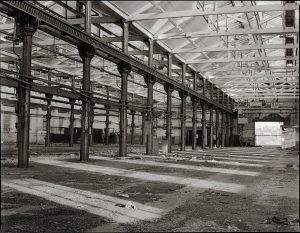
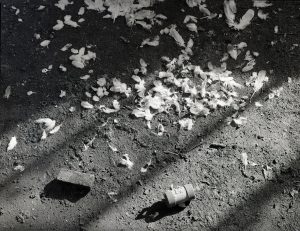
Strangely, I cannot remember how many times I went there, at least three times, probably four or five. Each visit has become amalgamated with the rest. I began by wandering, investigating and making photographs, later, on further visits I made installation pieces. That stillness was most striking on the first visit and I do remember seeing the slow motion of the extractor fan turning in a breeze from outside.
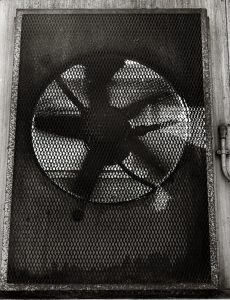
I followed a process of initial reaction, a slow documentation leading roughly from details to wider spatial depictions. From here, with intervening gaps between visits that gave rise through gestation to new ideas, a more active and interpretive process was devised and implemented. Works shown here were made on site and also as installations in the gallery.
The rest of what I remember is fragmentary, not in any particular order or structure, but relating mostly to actions and snippets of conversations. The acts of creating the installations as physical reactions to the site began when I found two stretchers, for taking injured workers out of the building. They were both folded up in upright cases, their exact location, somewhere central, I have forgotten. These gave me a way to respond to the building that was more than documenting, more active than the slow observation and making of the photography. These stretchers embodied the lack of presence in the tender shed. The workers who once inhabited the workshop now laid off, stretchered out, to unemployment and early retirement, as redundant as having a stretcher in a building absent of people.
In 2001, I revisited these pieces, making drawings on perma-trace, the drafting paper used by archaeologists on excavations and following, loosely, the methods of artefact drawing of archaeology. This drawing cartographically maps the stretchers and the artefacts on them. It is also to scale, which the photographs are not.
The difference between a photographic record, a documentary and an interpretive work in photography is often blurred and nuanced, but ultimately depends upon the presence or absence of the photographer’s decision making processes in the image, traces always remain, but conventions and traditions hide the photographer from the beholder of the photograph, we see through the decisions when we are used to the form of the photograph, transparently looking at what the act of photographing intends. We often see the thing and not the photograph we are looking at. In photographing the tender shed I remember struggling with this, with the idea of how to imbue a sense of the buildings imminent demise in the images I was making? The answer came from two directions: Water and walking. Pools of water reflected the superstructure of the building, breaking up the form. I also made double exposures, ghosting one image over another by exposing at one end of the building, walking to the other end, and exposing the same negative again, looking back. Both break the image and bring my decision-making process, and presence in the building, into the visual.
Interpreting the Archive
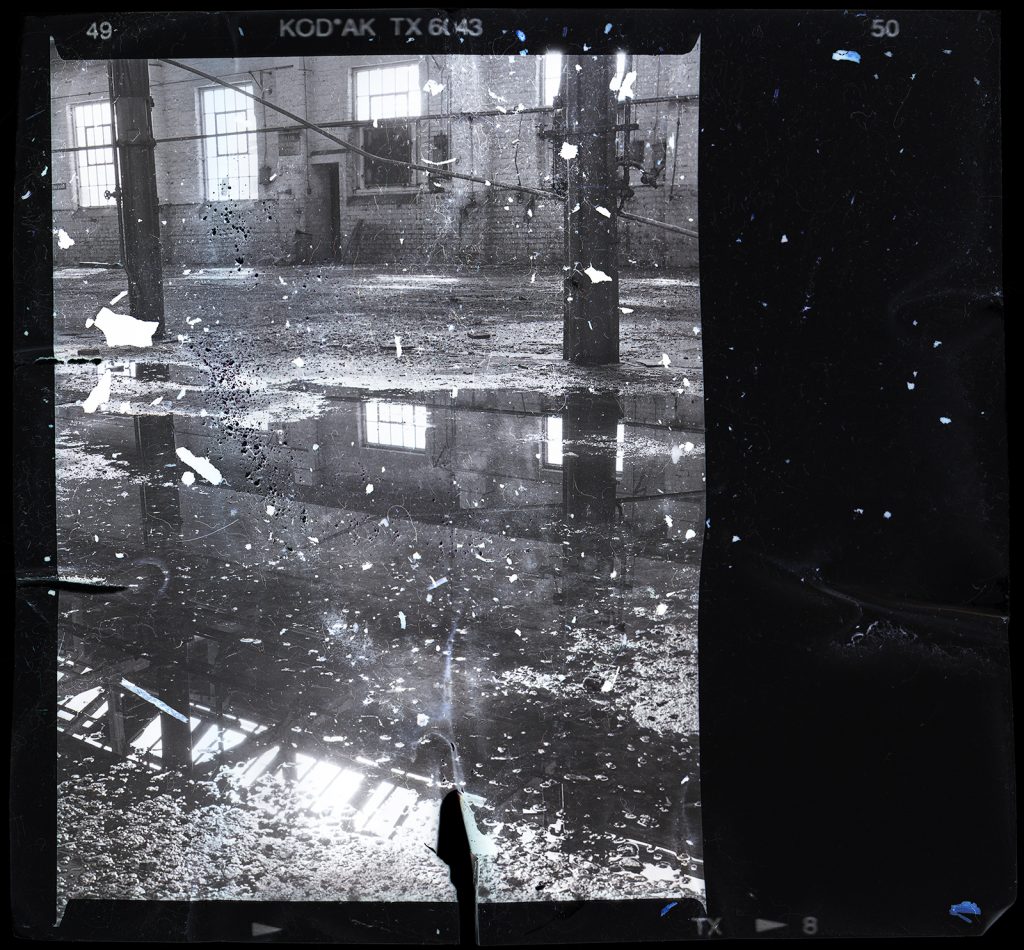
There are many more works in the archive than shown here. Returning to this project, I realised that further work was possible, and as this archive is my own, I am free to alter it in ways that those working with other archives housed in museums or libraries are unable to. This gave me an opportunity to ‘go against the grain’ of conventional archival practices in terms of my response. As the work has changed I decided to make further alterations that reflect on the passage of time and to bring an interaction to the work, between my body and the archive. I did this by walking on a selection of negatives. I placed them in my shoes and after each walk, I scanned the image with the following results;
This process of wearing away the gelatin emulsion of the negative by walking on it accelerates the inevitable decay, but paradoxically the scanning of the negatives, before and during the process, creates a digital archive. If these were originally digital images (none in this project are) then the archive would be primarily digital, so in a sense, this destruction of the archive is only partial, if material.
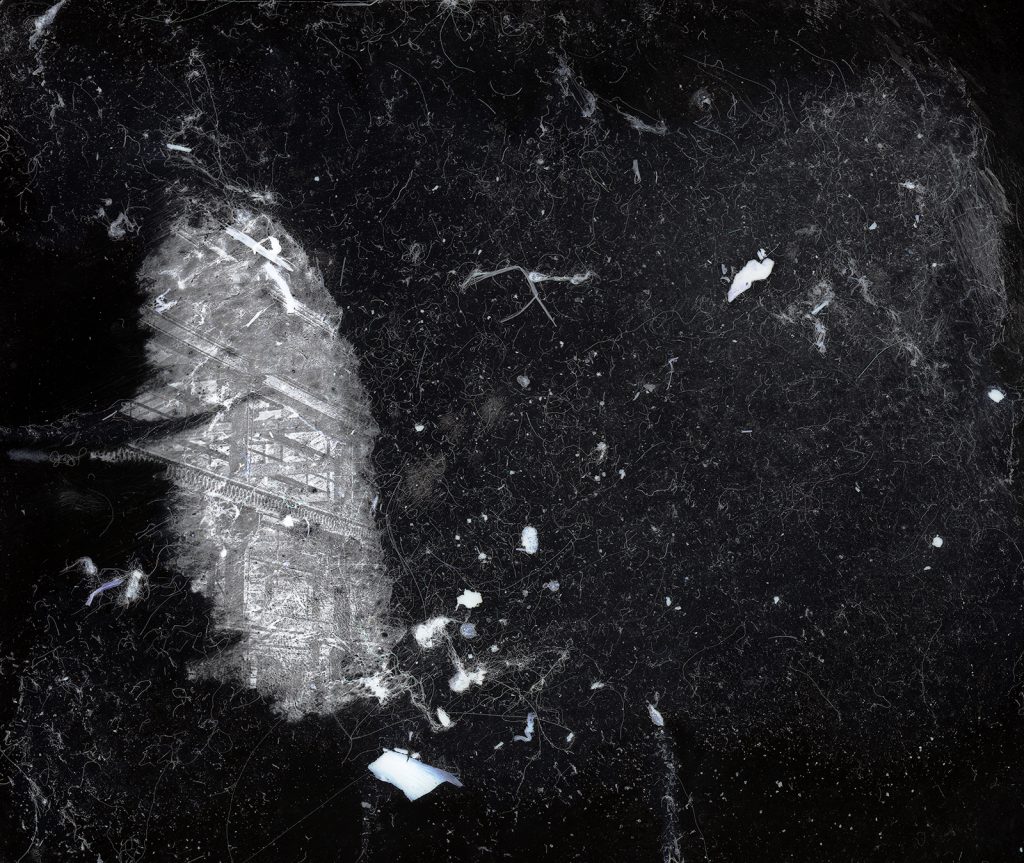 The result of this process is not only one of subtraction, but also an addition. Plant fragments, hair and dust (probably some of which is my skin) accumulate on the plastic substrate as the image is worn away.
The result of this process is not only one of subtraction, but also an addition. Plant fragments, hair and dust (probably some of which is my skin) accumulate on the plastic substrate as the image is worn away.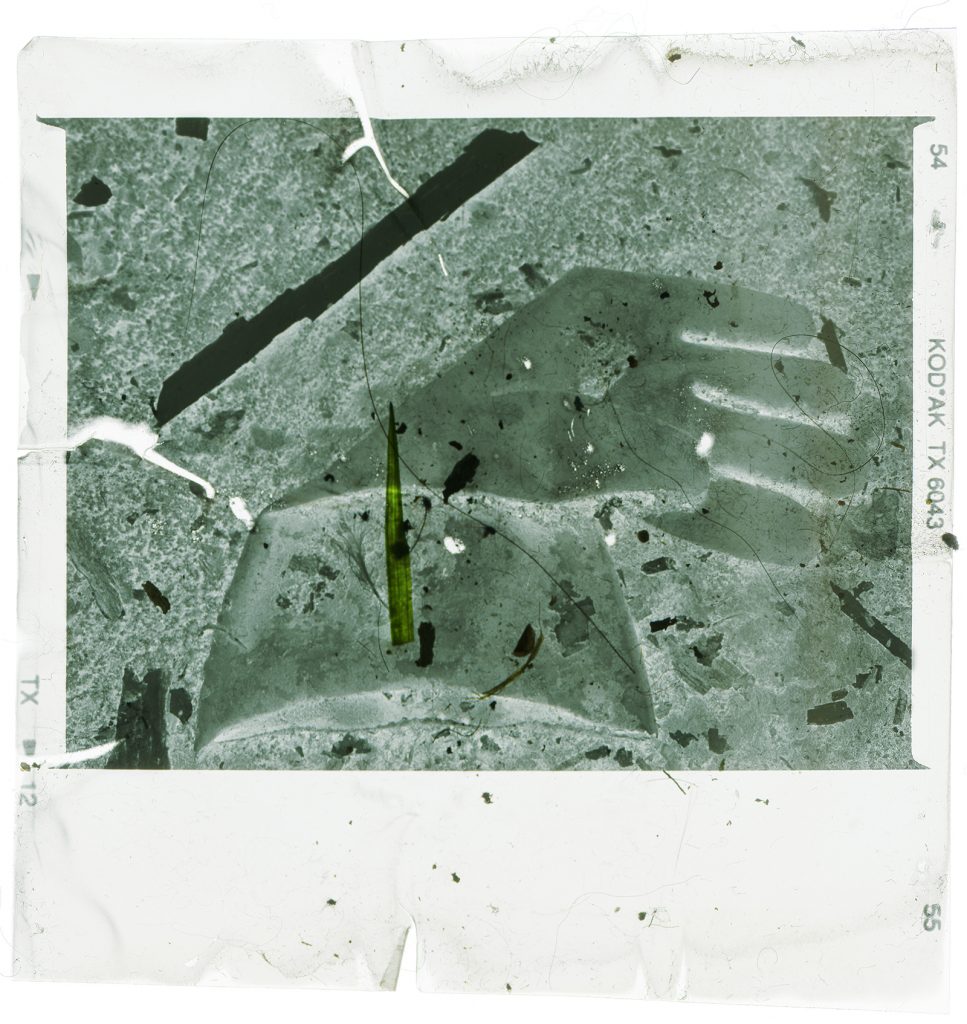 This deliberate destruction of part of the archive is an acceleration of the natural effects of time and environment. All materials as subject to change and eventual decay, arguably even those housed in archives under rigorous conditions. Just as meanings of artworks change with cultures through time, so materials are also altered. This act of destruction is my response to the lack of interest, either in sustaining the building itself or in recording an archive for future investigations. The act in itself becomes an extension of this archive, both adding to it, whilst also subtracting from it simultaneously.
This deliberate destruction of part of the archive is an acceleration of the natural effects of time and environment. All materials as subject to change and eventual decay, arguably even those housed in archives under rigorous conditions. Just as meanings of artworks change with cultures through time, so materials are also altered. This act of destruction is my response to the lack of interest, either in sustaining the building itself or in recording an archive for future investigations. The act in itself becomes an extension of this archive, both adding to it, whilst also subtracting from it simultaneously.
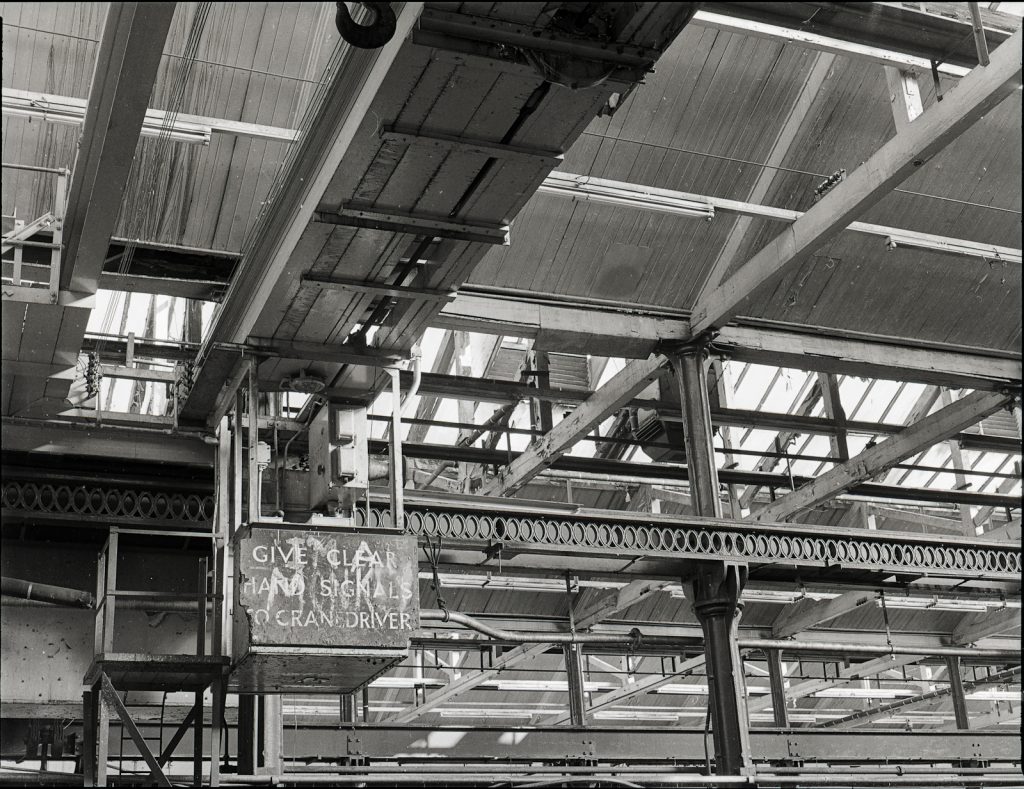
The Tender shed is long gone, deliberately demolished to make way for a car park for a supermarket, starkly reflecting on the changing values of the times. A movement in this case, from a state-run industrial engineering plant, provisioning the national transport infrastructure of Britain, through a process of privatisation, rendering the plant and workforce redundant and surplus. This led to the building became an asset to be stripped to open up land for the provision of a consumer outlet. A shift from skilled labour to semi- and unskilled labour and consumerism.
The actual building was structurally sound, not a ruin in the sense of it being past its usefulness as a structure, but a ruin in the sense that ideologies that sustained it were no longer politically desirable. I remember the Adtranz employee that showed me around the tender shed pointing out that the iron pillars and timber from the roof were both very valuable in terms of reclamation, hinting that the building was considered more valuable as scrap than as a sound structure with cultural value in the present and past with potential in the future. This question of value and its very narrow interpretation, in this case, highlights the tendency for nationally driven agendas to act as a destructive force locally undermining the social sense of place and leading to a ruination that is not only physical, in terms of the destruction of architecture, but also socially disruptive. Given these circumstances I cannot help but wonder what other uses the tender shed could have been put to as a commercial and/or cultural resource, thereby maintaining a connection with the past within the community, rather than erasing it through demolition.
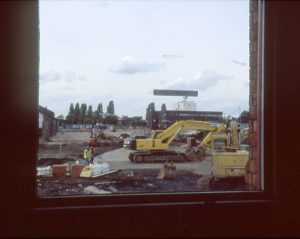
The view of the site of the tender shed from my studio after demolition. The same fate befell the studio a short time later.

